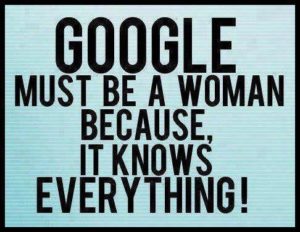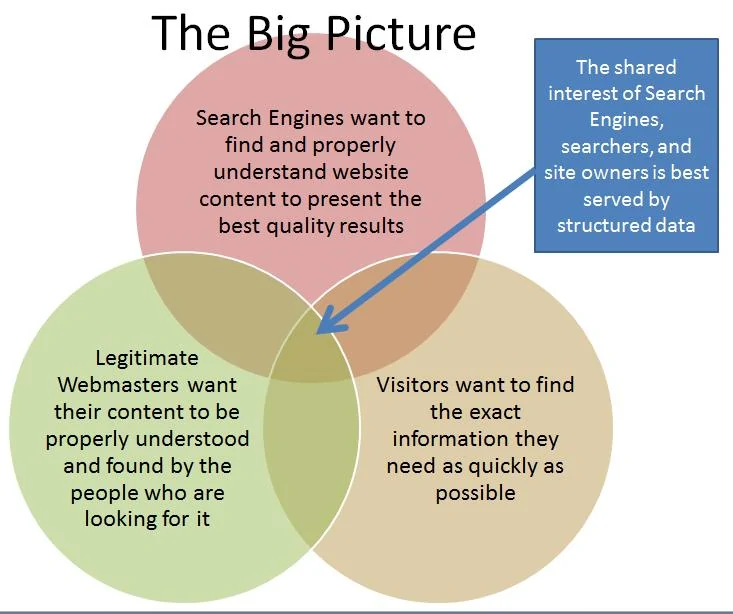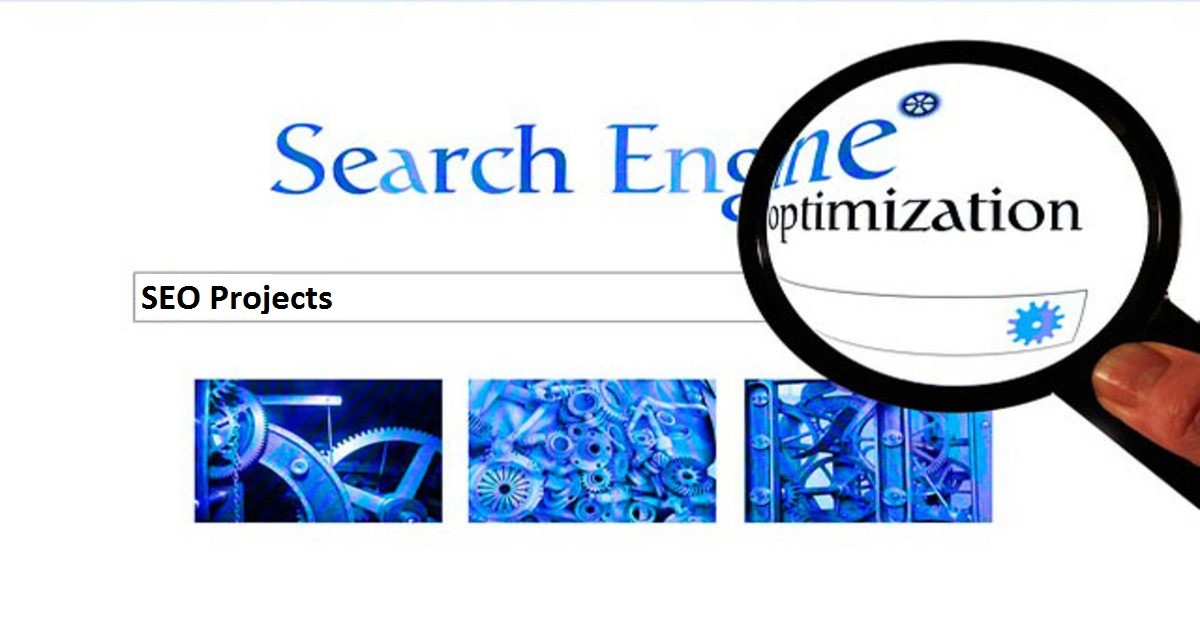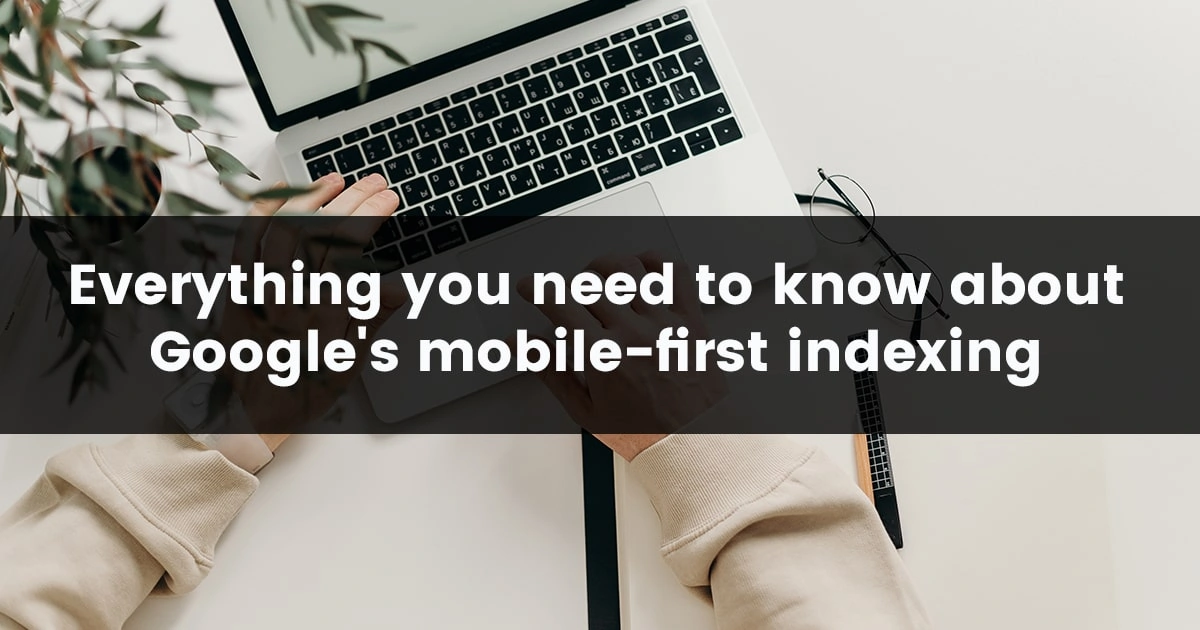Semantic SEO…? What is this new Jargon!
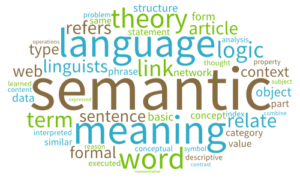
Before getting into semantic SEO, let’s get some basics cleared.The word semantic literally means “relating to meaning”; semantic search is creating content around meaning or groups of meaning. Google has always tried to push search results into the realm of conversation, creating results that are based off a user’s intent and how we might ask one other questions. The introduction of RankBrain into the Hummingbird algorithm is that step.
RankBrain uses AI to essentially teach Google to respond and act based on user intention through contextual groupings, synonyms and natural language.

What’s the Use?
Search is no longer about words, but about the things to which the words on a web page /web resource make reference. Images, videos and even individual pieces of data may be described in terms of the entities they contain and make reference to. This is the reason why a resource no longer needs to be associated with keywords to be useful for the search engines. When Google receives a query from the user, it’s trying more and more not to provide a mere match for the query keywords, but to understand the meaning underlying the query and then return information about the entities it has identified.
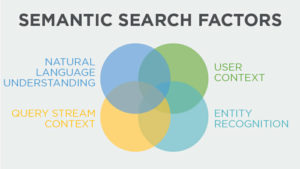
SEO will never really die; it will just change constantly!
Semantic SEO refers to a question or search phrase that produces meaningful results, even when the results don’t contain an exact match of the words or phrases used. Basically, it means the search algorithm is smart enough to interpret a searcher’s intent to deliver an answer to their question. It’s not a new term. It has been around since 2004. We are just seeing artificial intelligence in search getting better.
Better explained in the words of Mashable:

“Semantic search uses artificial intelligence to understand the searcher’s intent and the meaning of the query and not parsing through keywords like a dictionary. When you search now, Google gives you results based solely on the text and the keywords that you put in that search. Essentially, Google gives you its best guess. When you use semantic search, Google will dive into the relationship between those words, how they work together, and attempt to understand what those words mean.”
When you use semantic search, Google will dive into the relationship between those words, how they work together, and attempt to understand what those words mean. Google will understand that “their” and “they’re” has two different meanings and when “New” and “York” are placed together it changes the meaning.
Think about it, if a search engine understands your content, and can then present your content to users who are searching for it that too in a more attractive manner. This will result in higher CTR’s for pages where structured data is implemented leading to higher ranking in results. One way by which search engines show results differently for those who have implemented structured data is Rich Snippets (I will define this in a bit). These give the customer extra information and garner more attention than other search results.
Why is it good for your business?
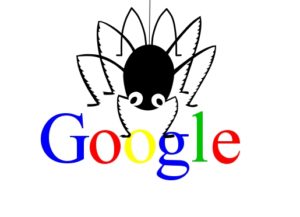
- Google Bot find it easier to understand your site and match queries to right content.
- Site visitors are pleased when they can easily find answers- Semantic search technologies allow people to track down information by concept instead of by the limited match of a keyword or key phrase.
- Improvement of user experience on page- A semantic approach to writing digital marketing messages spares readers from unnecessary and repetitive word choices.
User experience - Business intelligence is enhanced- With Semantic search strategy you can highlight your genuine business benefits for the right buyer if your documents are prepared for an answer searched by matching queries.
- Semantic strategies encompass both organic and paid search- Good Semantic strategies lead to better user experience which lead to more CTR’s finally leading to better rankings thereby helping your organic search. Semantic keyword strategy used in Google AdWords, Ad Extension, Structured Snippet can add to the value of your paid search.
- Increase in Click Through Rates on Search Results with a Rich Snippet
Ctr
How to Start Semantic Marketing

Let’s do this!
- WordPress (Free)- If you have a WordPress website, you can start by adding Schema App plugin. This will automatically add structured data to your pages and posts. It’ll also connect you with Schema App.
- Business Websites- Every business should add semantic search markup to their website homepage, about page and other services/products to get a rich snippet or Knowledge panel. The homepage or organization markup outlines your business name, description, social media accounts, contact numbers logos etc. which in turn can contribute to the Knowledge Panel in Google search.
- E-commerce Companies– If you own an ecommerce company, firstly markup your business and products. This can be done by adding structural data to your product template.
- Content Rich Websites- Use structured data to make your content topics completely clear to search engines which will then result in matching your page with users trying to find it.
What are Semantic Marketing Terminologies?
Bring it on!
A) Knowledge Graph
Wikipedia says:
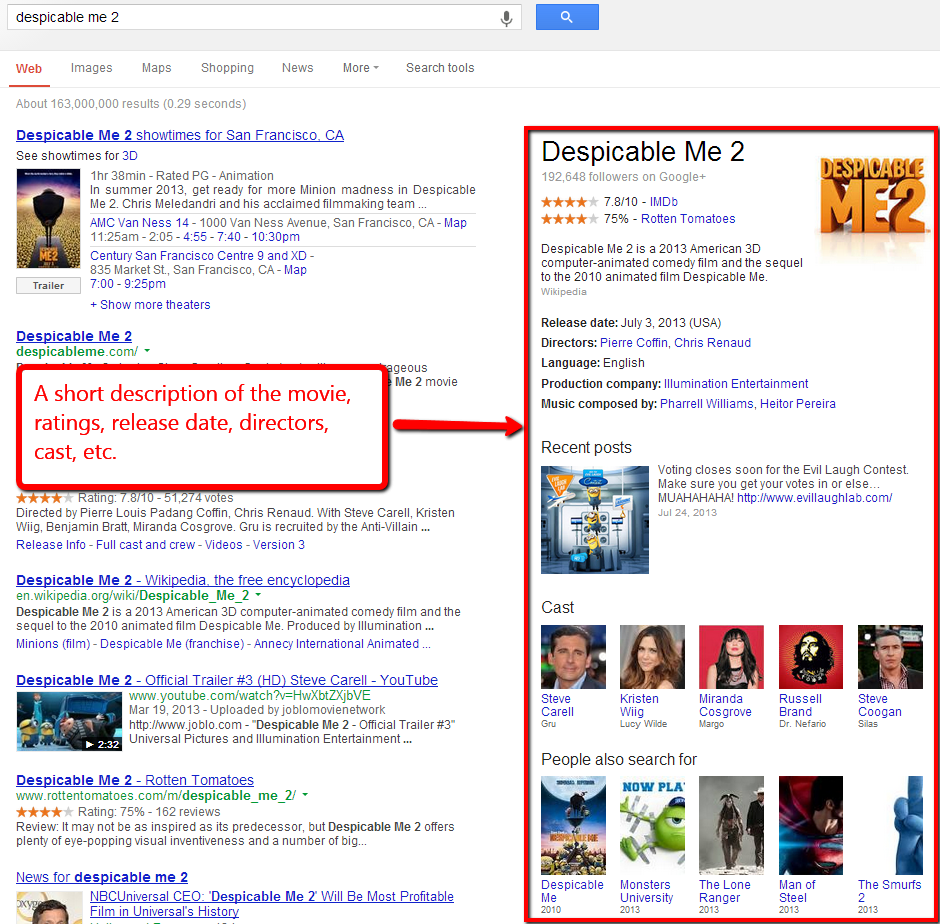
The Knowledge Graph is a knowledge base used by Google to enhance its search engine’s search results with semantic-search information gathered from a wide variety of sources. It understands facts about people, places and things and how these entities are all connected.
In their 2012 introduction to the Knowledge Graph, Google announced
“… we’ve been working on an intelligent model — in geek-speak, a ‘graph’ — that understands real-world entities and their relationships to one another: things, not strings.”
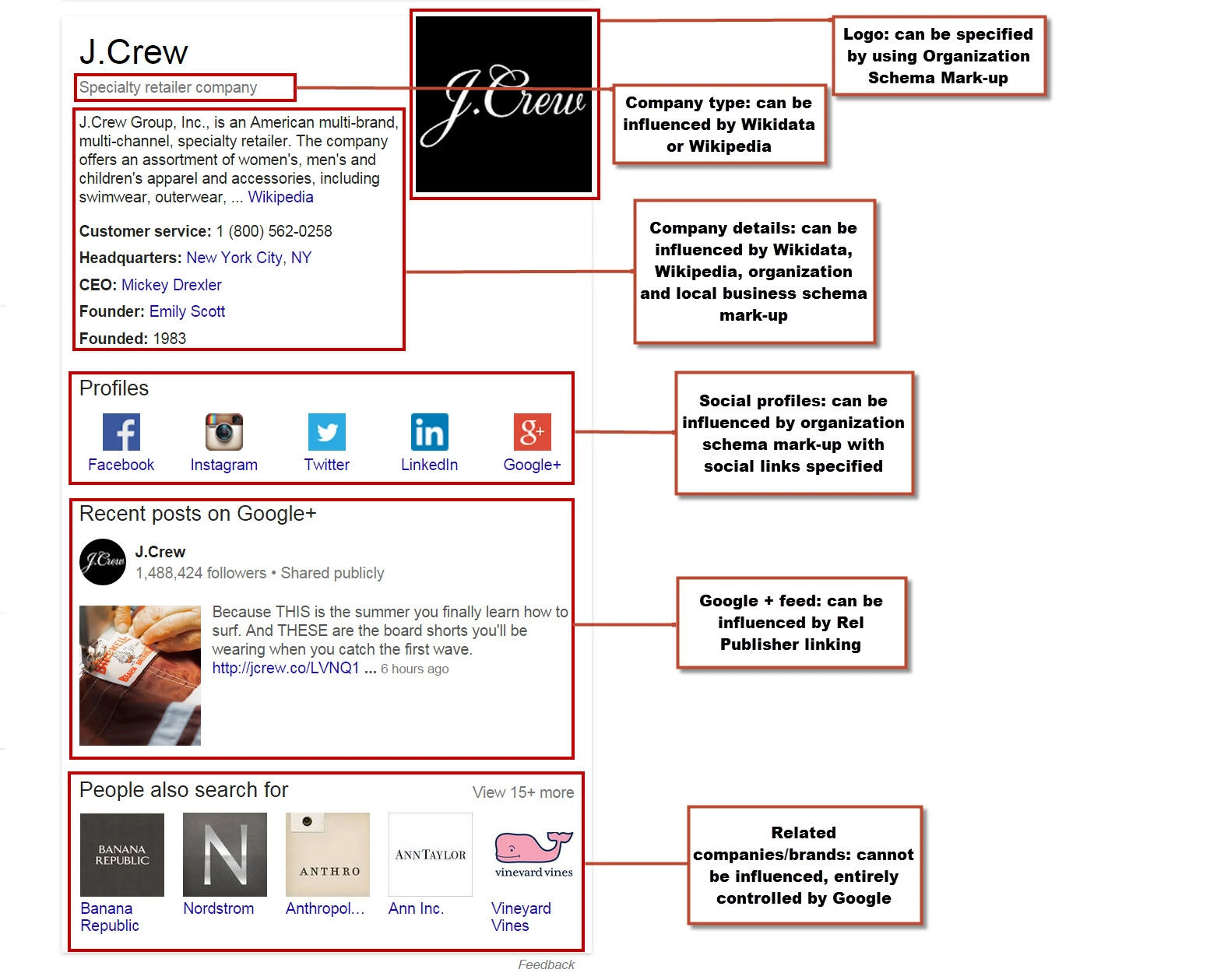
Confused Yet!
Well, let me put it this way, when you typed something into Google search box, Google understands that they aren’t just words, they refer to real things in the real world. They are not just strings but things. That’s how Google does a better job of getting you just the content that you want off the web.
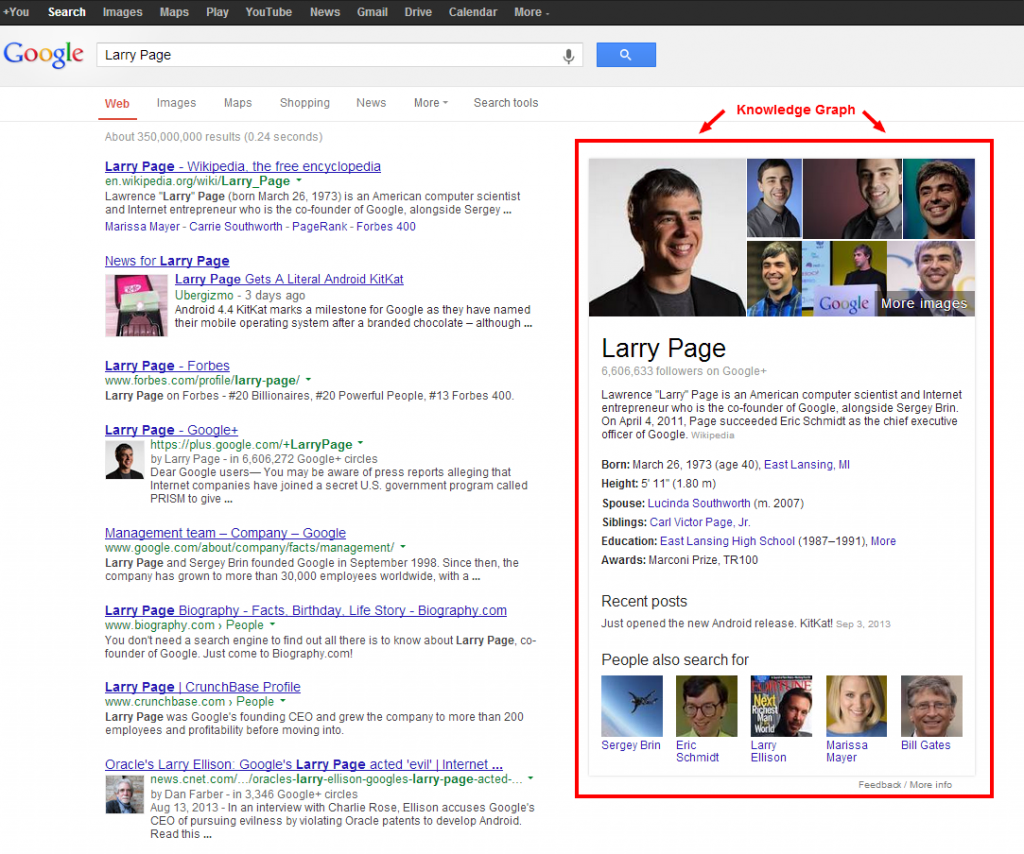
The way Google is trying to build information about real world connections is by building a Knowledge Graph. It collects information about objects in the real world. The object could be a person, a book, a movie and many other types of things. It understands more of the user’s queries and the information that’s on the web and intelligently connects the two.
Google’s Knowledge Graph is used both behind the scenes to help Google improve its search relevancy and also to present Knowledge Graph boxes, at times within the search results that provide direct answers. With Knowledge Graph, Google will now be answering questions itself, instead of relying on another website to provide the information.
B) Rich Snippets
By marking up web pages using vocabulary from schema.org, webmasters can help their sites become eligible to display rich snippets in search results. While Google doesn’t guarantee that rich snippets will appear for any site, incorporating structured data markup makes it easier for search engines to crawl, parse and display page content.
While structured data markup for rich snippets does not work as ranking criteria, it can generate indirect SEO benefits by making your page more indexable.
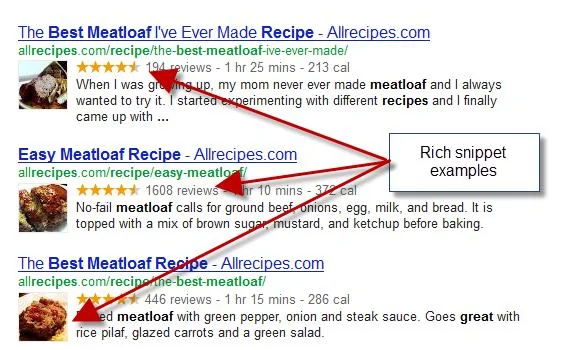
When I visit a site, then realize it’s not relevant and bounce, I’m not pleased. I’m back to search again and Google isn’t pleased either. With rich snippets, your visitors know what you do and can even see social proof like reviews right in the snippet. Rich snippet can give you great visibility when you get your structured data markup right.
C) Structured Data
I will be dealing with this in a little detailed manner as this is an important aspect of semantic search. Please bear with me!

Here we go! Brace yourselves! Get some popcorn before you begin!
Definition
Structured Data sends detailed information about the meaning of your web page content to the search engines in a way that can be easily processed by the computers. It allows search engines to not only crawl your site, but to truly understand it. Structured data is the “extra” information that you see next to a website and meta description. For example, if you are searching for a restaurant, you will see not only the restaurant’s name, but also additional information such as hours, pricing, stars indicating positive reviews. If your website is not using structured data as part of the SEO strategy, then you are missing out on ranking higher in SERP. Structured data is on-page markup that enables search engines to better understand the information currently on a business’s web page, and then use this information to improve your business’s search results listing.
It helps in determining basics such as name, address, place, as well as information such as articles, events, products, recipes etc. on your website. Mobile is driving the semantic revolution. As users move from PC based searches to mobile searches, structured data rather than keywords, will have a greater impact on search engine results.
The following guidelines describe general policies on creating high-quality structured data.
Formats – Google search supports structured data in the following formats.
I will not be getting into the details of it as this isn’t a part of my blog topic and also because my blog is already too content heavy.
- JSON-LD
- Microdata
- RDFa
Technical guidelines (Source: developers.google.com)
Oh… more & more & it never ends!
- Unless specified otherwise by the documentation, structured data should be posted on the page that it describes. For example, Book structured data would live in the code of the page that describes the book, Recipe structured data lives in the code of the page for that recipe, and so on. Some structured data might live elsewhere, but that will be documented as such: for example, a list of multiple items can be defined on one page (the list page), but each element in the list can be defined on its own page (a leaf page).
- If you have duplicate pages for the same content, you should put the same structured data in all page duplicates, not just the canonical page. (Technically you only need the structured data on the canonical page, but because you cannot guarantee which page Googlebot considers canonical, it is safest to put your structured data in all copies of the same page.)
- Use the most specific applicable type and property names defined by schema.org for your markup. The data may be embedded in your webpage using any of the supported formats: JSON-LD (recommended), RDFa, or microdata.
- Do not block your structured data pages to Googlebot using any access control methods.
- When marking up an image URL as a property of a type, make sure that the image actually belongs to the instance of that type. For example, if you mark up the schema.org/image property of schema.org/NewsArticle, the marked-up image must directly belong to that news article.
- All image URLs should be crawlable and indexable. Otherwise, we will not be able to display them on the search results page.
- You can include multiple structured data objects on a page, as long as the information is appropriate to that page, and applies to the user-visible content of the page. When you have multiple entities on a page, we recommend that you mark up all entities on that page to help Google algorithms better understand and index your content. For example:
- A recipe page might have text describing the recipe along with an accompanying video. Each of these types should be marked separately with schema.org/Recipe and schema.org/Video Object respectively.
- A category page listing several different products (or recipes, videos, or any other type). Each entity should be marked up using the relevant schema.org type, such as schema.org/Product for product category pages. Marking up just one category entity from all listed on the page is against our guidelines.
- A video play page might have related videos embedded in a separate section on the page. In this case, mark up the main video as well as the related videos.

Almost done ! Don’t worry!
Google does not guarantee that your structured data will show up in search results, even if your page is marked up correctly according to the Structured Data Testing Tool. Here are some reasons why:
- The structured data is not representative of the main content of the page or potentially misleading.
- The structured data is incorrect in a way that the testing tool was not able to catch.
- The marked-up content is hidden from the user.
- The page does not meet the technical or quality guidelines for structured data described here, or the general webmaster guidelines.
Quality guidelines
At Google, our first priority is to help our users find relevant, engaging answers for their search queries. High-quality structured data must not create a misleading or deceptive experience for search users. It should be an up-to-date and accurate reflection of the topic and content already found on the page, such as text, images, and videos. For example:
- A page about a dinner recipe may use recipe structured data to list the ingredients and describe the cooking steps.
- Markup should not be used to hide content not visible to users in any form, since it might create a misleading or deceptive search experience. For example, if the JSON-LD markup describes a performer, the HTML body should describe that same performer.
- Content must not promote paedophilia, bestiality, sexual violence, violent or cruel acts, or targeted hatred.
We perform algorithmic and manual quality checks to ensure that structured data meets relevancy standards. In cases where we see structured data that does not comply with these standards, we reserve the right to disable rich snippets for a site in order to maintain a high-quality search experience for our users. Read our webmaster guidelines for more details.

Finally, its done…and we have some good take away… don’t we!
D) Schema.org

Google is smart, however there is 20% of the website that it cannot figure out on its own. To fix this, Google, Yahoo, Bing, Yandex got together to define a vocabulary called Schema.org, so that you could tell them what your website is about. Intention was to create and support a common set of schemes for structured data markup on web pages. The result was birth of semantic search marketing.

This is the de facto web vocabulary, for structured data on the internet, on web pages, email messages, and mobile. Adding schema markup to your HTML improves the way your page displays in SERPs by enhancing the Rich Snippets displayed beneath the page title.
Structured data can be used to mark up all kinds of items from products to events to recipes. It is most often used to provide additional information about:
- Creative Work
- Event
- Organization
- Person
- Place
- Product
Each type of information has properties that can be used to describe items in more detail. For example, a book which falls under the category “creative work” can have properties “name”, “author”, “illustrator” and more.
When we mark up the phrase “Paris Hilton” using schema.org/Hotel, it knows we are referring to a hotel in Paris, France rather than the celebrity Paris Hilton, for which you would mark up with schema.org/Person.
Is Keyword Dead?

No, it isn’t. In order to rank well in the semantic search, you don’t just have to put your keywords in the right places, you will have to figure out the actual meaning behind those keywords and create content around that specifically. That means there is more emphasis on the keyword research, wherein more focus will have to be given on what that person actually means when searching for that keyword.
The keywords within a query are still important. It does strengthen the role of long tailed keywords. Google is trying to reduce the importance of keyword optimization and force webmasters to appease the searcher.
In other words, it is no longer enough to draw ay traffic to a website. We have to be more specific and target specific traffic by answering specific questions within the content. This cannot be done in a general way without giving details to the keywords.
Mobile- The Game Changer!
Search is changing because the lives of Google’s users are changing, they now carry their computers with them. Mobile computing impacts search behaviour:
- Refinement- Search Engine users know that the initial query majority of the times produces unsatisfactory results. Users are required to modify their search terms adding or removing words in order to arrive at the desired set of search results. While refining doesn’t give a great user experience it’s worse on the mobile. Therefore, search engines aim at giving the right search results in the first go itself.
- Navigating- The process of navigating to web pages, and moving back and forth between search results and web pages isn’t that difficult on the desktop as it is on the mobile devices. This requires search engines to get past additional web page visits and present the answers directly in the search results.
- Finally, mobile devices make lookup functions like airline flight information more difficult. Semantic technologies facilitate linking information about a personal entity (me) and information about another relevant entity (airline) in a mobile-friendly manner.
- Google now would not be possible without semantic technology.
Yippee! I finally mention this! No I didn’t forget about my blog topic!
7 ways to add depth to your content
1) Assess if your Business has Enough Experience and Expertise in Your Fie
92% of the online users will rely on what people close to them say before they trust a particular brand or product or service. This level of trust can be developed if that business has enough experience and expertise in their particular field. If you want your business to fare well in the brave new world of the Semantic Web, then you need to make an assessment about your company’s online reputation.
These attributes are all crucial in establishing a strong presence for your business in the Semantic Web. If your business has enough expertise, then you are in a position to create more business credibility and have a stronger brand awareness. However, if your business has the expertise but still lacks the years to account for a strong online presence, you can compensate with a strong social media presence and good content.
2) Your Team Should Know the importance of Content Marketing
Content is the most important factor and will continue to be so in the world of Semantic Web. Your team should know the importance of content marketing and how it should be at the core of your digital marketing campaign.
It would be advantageous if you have a dedicated team to create all the appropriate materials you need to conduct your content marketing. This would include the creation of articles, graphics, audio, video and other content forms. Create content that can serve as an answer to what your target audience is looking for. Create content linkable assets, which website owners can link to. These will matter in how your websites will rank in semantic search results.
What are linkable assets? Let me add more color to it:
Activities that Targeted Customers can participate in like Events, contests, quizzes, video sharing, comment boxes, and other such activities your targeted online audience can actively join and participate in.
Tools that the Targeted Customers can use like Apps, software and other tools that are useful for their needs will be worth linking too for people who will find these things important and useful.
Information Targeted Customers find interesting like people really are interested in Top 10 lists, quotes list or interviews with influential people in your targeted area.
Videos that Targeted Customers can use. Videos can be more convincing than just text in conveying your message to them. These materials can get viral and be linked to if people find them to be useful.
3) Have an Active Social Media Presenc
Social Media presence will also be a very important factor in how a business will fare well in semantic search. Social media marketing is the second best digital marketing platform after a business’s man website. Customize your content according to these platforms. Make your content more interactive. Business and their content, that are actively interacting and communicating with the people in social conversations in these networks will matter highly to Google in an era of Semantic Web.
4) Carefully Using Semantic Mark-Up
So that the semantic search engine can easily index your content and the web crawlers can match your content exactly with what the users are searching for, you need to label or tag your content with semantic mark-ups as defined by Schema.org. This platform was an initiative by Google, Yahoo, Bing to be able to understand the website properly. Moreover, the content of the website properly, not just the keywords used but the meaning of the words in these pages to match it with the intent of the users for a better user experience.
You should only markup content on pages that you want the users to see. Like semantic markup for business hours, business locations, product locations and prizes. The more content you mark-up, the more information search engines can index from your website for showing in search results.
5) Submit Your Website to the Semantic Web
Once you have your content properly marked up with semantic microdata and other semantic mark-up forms basically after content has been labelled by semantic mark-up and verified by humans for accuracy, the next step is to submit your information to a semantic web database platform like DBpedia to make your information and content easily available and accessible to your targeted audiences.
6) Be on Google Plus
After your content is marked-up semantically and submitted to the semantic web, you need to centralize your online presence and footprint so you can boost your visibility in the search engine networks. Be on Google+.
Why should your business be on Google +?
Well it is owned and operated by Google of course. And as a generalization, like YouTube and Google Places for Business, Google + profiles do have some perks in getting ranked/indexed by Google. You increase the odds of getting highly targeted visitors from Google’s organic search results.
You can start by optimizing the content you will be putting up in your Google+ profile for semantic search. This includes text, photos, and other content that you will include in your Posts stream and About tab. With Google+, you can also establish your Authorship which will make your content factor higher in semantic search results.
Last but not the least…Show me the money!
7) Optimize Your Website for Conversion
After you have completed optimizing your content for the Semantic Web, the next step is to focus your website for conversion rate optimization. Labelling your content with semantic mark-up and optimizing your website for semantic search will not do your business any good if visits from targeted customers will not result to conversions. High conversion rates will put your website in high standing with semantic search engines, making them prioritize the recommendation of your sites to related search queries.
Do we really need Semantic Search Optimization?
All this effort…is it worth it? Does Google even care?
Now with voice activated search, our search behaviors are changing. Users of Chrome may have noticed a small microphone icon in the right-hand corner of Google’s search box (now on Google search as well). If the user clicks on the microphone, after the computer has been configured for it, they may ask aloud the question they would have typed. The more conversational the query, the more information is provided.
With all of the intelligent changes Panda and Penguin brought to the table, it was only a matter of time before one of Google’s big-brained developers found a way to “smarten” search engines to take a question and look at the context rather than seeing the words within the query as separate entities. This means that Hummingbird is smarter than your average Panda. It is named for the speed and accuracy of the tiny bird. The goal is to provide results that actually answer the question.
The Hummingbird came in because:
a) Google promised answers by creating its very first search engine. The problem is, people are asking questions, not typing in keywords. We have always asked questions and until now Google has not answered any of them. It merely shows us where we might get the answers based on some of the words we use by making a guess. Now, Google wants to answer the questions by comprehending them and giving us the right answer at the right time.
b) More and more people are using mobile devices. Google knows it is important to understand a question and give the right answer especially when driving.
There are pros and cons to everything so is to Hummingbird but that is for another blog. However, when we analyze, one of the most obvious goals of Hummingbird is to turn SEO into marketing. It turns the website’s focus on a broader audience. Content has just taken another large step. With each new release Google becomes more transparent in its urge or goal to appeal to the users at large and change the way we look at Search Engine Optimization.

